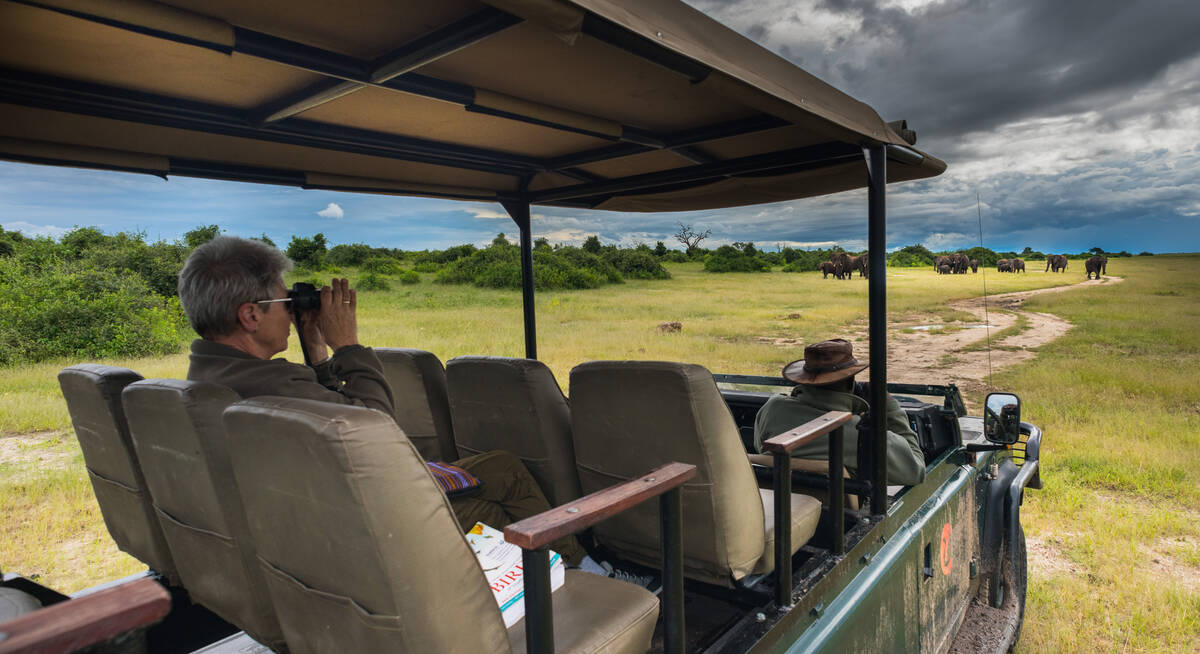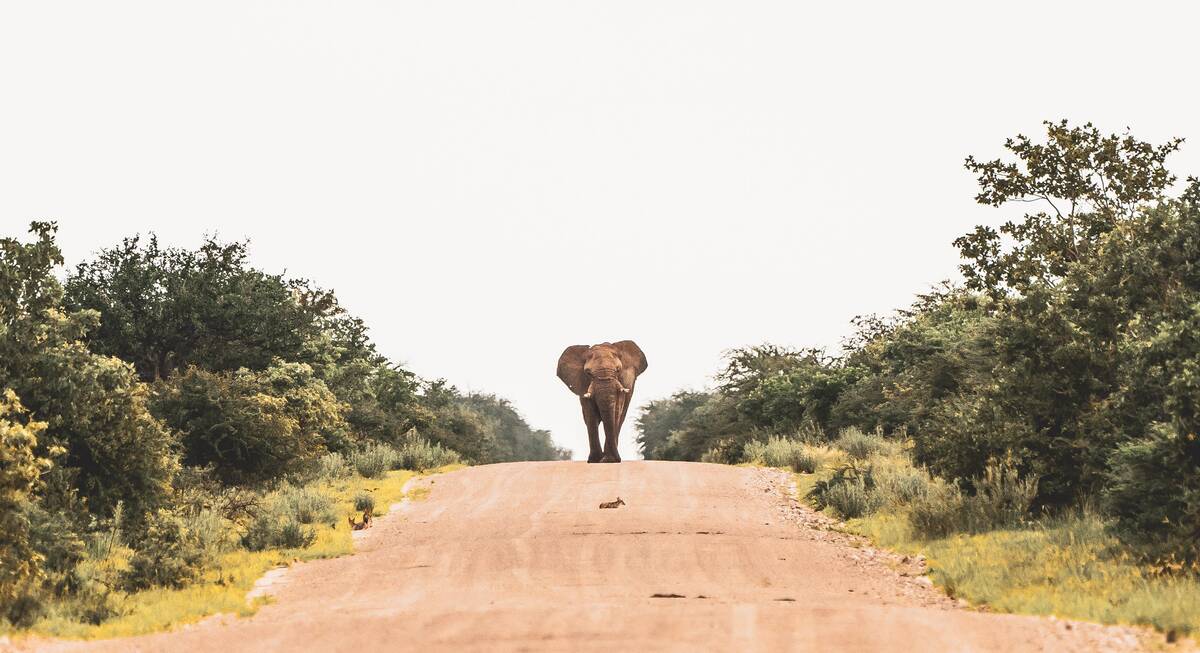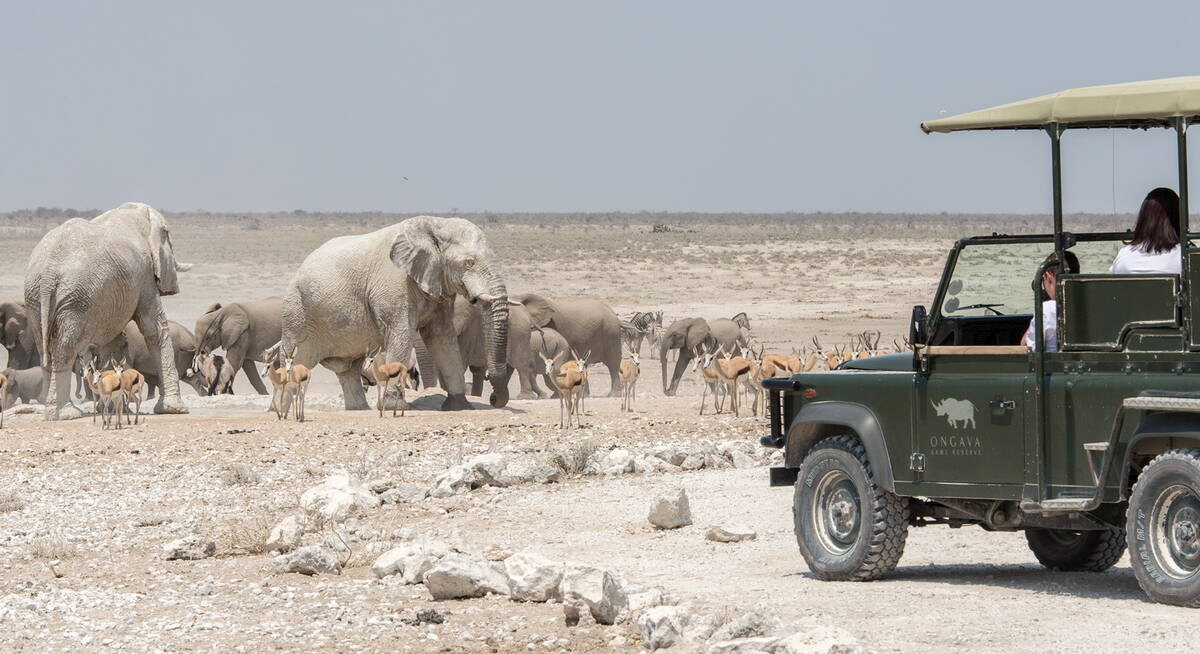Where to see Leopard in Namibia
The leopard is not uncommon. The most numerous of Africa’s big cats, it occurs in all major conservation areas and across most habitats. Nonetheless, its grace and elusiveness make it a unique safari drawcard.

Quick facts about Leopard
| Scientific name: | Panthera pardus | Habitat: | Savanna, woodland, forest, mountains |
|---|---|---|---|
| IUCN status: | Vulnerable | Adult weight: | 30–90kg |
The leopard is a powerful and versatile predator that varies greatly in size and habitat. It uses stealth and camouflage to ambush prey at close quarters, typically taking small to medium-sized antelopes, though everything from birds to young giraffes may make the menu. Most active at night, leopards are agile climbers and unique among big cats in using trees as ‘larders’ for prey.
Key identification features include a long tail, usually curled at the white tip, and beautiful rosette patterning (unlike a cheetah’s solid spots). Males are around one-third larger than females, with a larger head and more jowly throat. Adults are largely solitary, though cubs may remain with their mothers for 18 months.
64
Range countries worldwide
5,200m
Highest recorded altitude
108cm
Max. tail length
12–17 years
Average lifespan
The top camps for seeing leopard in Namibia
Based on 252 reports by our travellers since Jun 2018, visitors at these camps in Namibia have the best chances of sighting leopard.
Best chances to see
Good chances to see
Some sightings
No sightings yet
Where to see leopards in Africa
Leopards are widespread but good at hiding. By day, you may spy one in a tree. At dawn and dusk, they become more active on the ground. Night drives can be productive.
Top tips for viewing leopards
Leopards occur everywhere from mountains to rainforests but are best seen in savannah and woodland habitats. Highly territorial, they often show up repeatedly in the same area.
Classic leopard country includes river loops with large trees and rocky kopjes surrounded by open bush. Even if invisible, a leopard’s presence is often betrayed by the alarm calls of prey, such as baboons, impala or even guinea-fowl. Be patient and you might get lucky.
Certain locations, such as Zambia’s LuangwaValley, are famed for leopard sightings. But all major conservation areas, from the Kalaharito the Maasai Mara, offer a chance, especially where guides know the habitats and whereabouts of individual cats. Night drives increase the chances further. Listen out after dark for the distinctive deep territorial call, which resembles the rasp of a saw.

Our best Namibia holidays for leopard sightings
Based on our travellers' reports, these ideas for Namibia safaris are likely to give the best leopard sightings

More information about leopard in our other destinations
Click here for detailed information about leopard in other countries, including the places for sighting leopard.
















